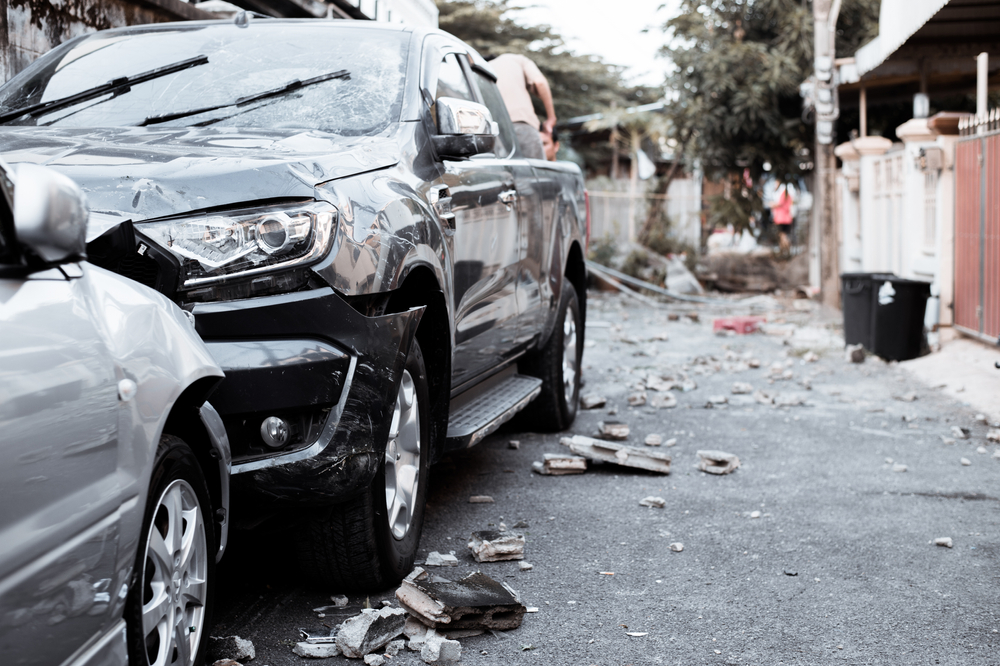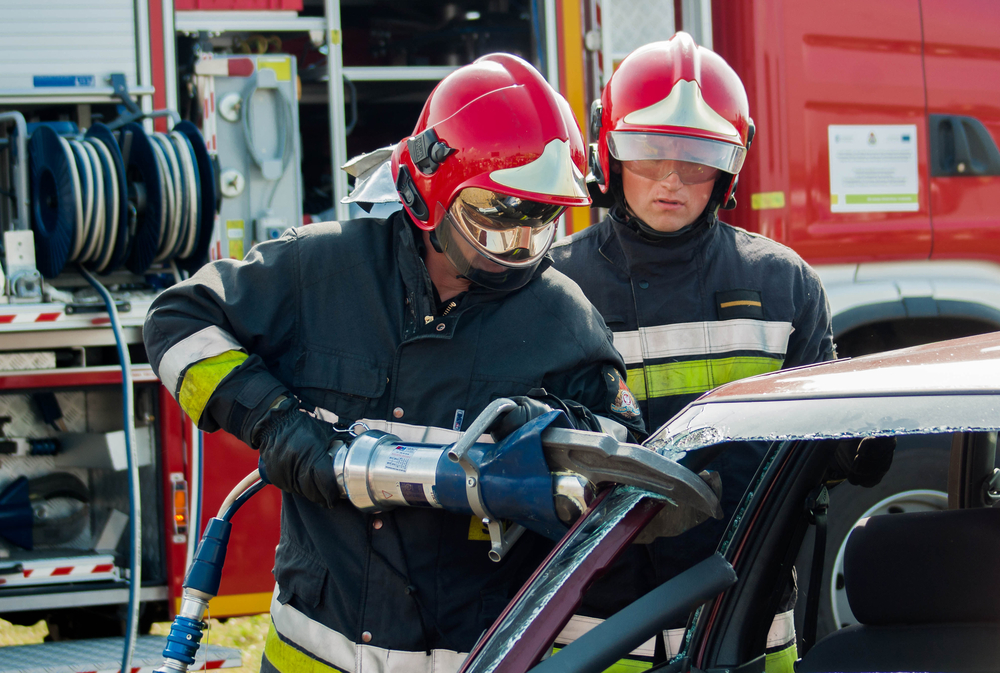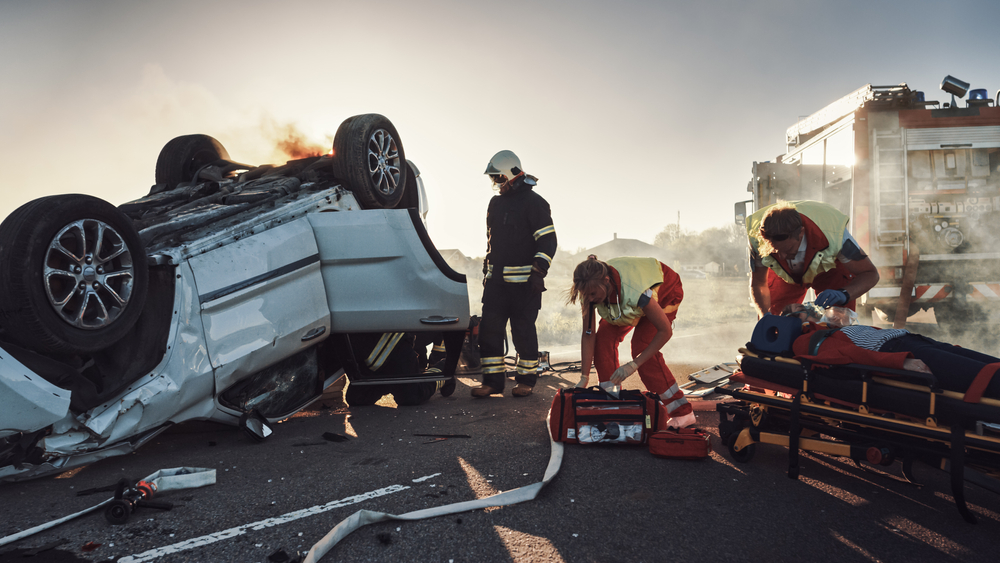Exclusive: Vehicle Rescue provision – A new approach to rescue
- June 7, 2021
- 1:57 pm


Iain Hoey
Share this content
Neil Pedersen, CEO of International Road Rescue and Trauma Consultancy (IRRTC) discusses the need to find new ways to work when on the scene of a vehicle rescue mission
They say that having a near death experience can change a person’s perspective, and that’s what happened to me in 2016. Whilst on a humanitarian training mission in Tajikistan and travelling along the Pamir highway through the Khorog mountains the vehicle we were travelling in was hit by an oncoming vehicle. Our vehicle came to rest inches from the edge of a hundred-foot ravine (no barriers) into a river deep below.
Luckily no one was injured in this collision, but it certainly made me think how ironic it was how we were travelling to deliver vehicle extrication training and trauma care training to volunteers in the Khorog and yet we had no rescue gear ourselves whilst travelling along the 7th most dangerous road in the world.

This incident was one of the Catalysts for the formation of International Road Rescue and Trauma Consultancy (IRRTC) in 2017 whilst training Tajikistan’s first ever Road Traffic Collision instructors on behalf of SESHAA, EASST and FireAid.
Every year 1.25 million road users are killed globally and another 50 million are injured (WHO global statistics) and this incident made me think what more can be done to improve these awful statistics and provide rapid provision of effective roadside rescue in all countries.
Even in major cities across the world it can take as long as 15-20 minutes for an emergency response to arrive at the scene of an accident from the time of call and in rural or remote areas it can be much longer. I know from experience after 30 years as an operational fire officer that these times can be affected by weather conditions, location of incident, road conditions, crew availability (Retained/Part time or volunteer stations) and traffic build up.
It is true that modern vehicles are stronger and safer than vehicles of years gone by but the flip side to this is that when these vehicles are involved in severe collisions it is much more difficult to release any trapped casualties within the vehicle due to the strength of modern materials such as high strength steels etc. Many of you will have years of vehicle rescue experience and have witnessed numerous first-hand incidents where the only way to release occupants is with the use of specialist hydraulic rescue equipment.
Rescue First Responders
I would like you to consider the following question. Should other emergency services and non-emergency organisations be trained in vehicle rescue so that the first to arrive on scene can perform rapid release or begin release operations?
I know that the above question may seem alien to many but consider that medical response worldwide tends to be a mix of varying level of expertise ranging from trauma consultants in helicopters to voluntary responders with limited trauma experience in their own vehicles but they all have one thing in common – they are trying to save lives. Therefore, why don’t we at least consider the possibility of having ‘Rescue first responders’ who may be able to provide initial stabilisation of a scene, casualties and begin rescue operations until a full response arrives and the rescue is then transferred to them?
In many situations in the UK the police or medical services are on scene first before the fire service that then assess the situation and then mobilise the fire service leading to delays in rescue activities. If they had even a limited capability and basic awareness, they could carry out a rapid release of a severely injured vehicle occupant or begin rescue operations in readiness for a full rescue attendance when it arrives. In fact, there are already many countries who have adopted this approach.

Another example one which I have experienced personally is being caught in traffic on the ‘Smart’ motorway system with all running lanes unable to get to the incident because there is no hard shoulder and you are faced with 4 lanes of solid traffic build up. Some of you will have experienced this I’m sure.
So, in this instance consider that often in these situations the Highways agency (UK) are very often first on scene and could carry out a life saving rescue with basic battery powered rescue tools, PPE and casualty protection. The technology is now out there to achieve this, the only thing that needs to change is the understanding of what now can be achieved and a willingness to embrace change to save lives.
Ask yourself this question – does the injured person care which organisation rescues them as long as the rescuer is making their situation better for them and they are receiving good quality care and support?
Why hasn’t this approach been taken before?
For many years it was only possible to have a sufficient rescue capability if you had a large hydraulic generator, hydraulic hoses, and large heavy rescue tools. This meant that it was not realistically possible to provide a portable rescue solution.

However, advancements in hydraulic tool design and the advances in battery technology now mean that it is possible to produce tools capable of in excess of 30 tons of cutting and spreading forces that can now be combined into smaller and lighter tools without the need for generators or hoses. As a result, it is now possible to have a state-of-the-art rescue capability in any vehicle which will allow an immediate rescue intervention on the scene of any accident or incident.
There is now a wide range of small powerful rescue tools which will permit rescue operations and greatly increase survivability rates by allowing rapid extrication of seriously injured casualties whatever your location.
These tools and associated training will also be particularly useful to the following sectors:
- Law enforcement agencies
- Medical response organisations
- Security, Close protection and military organisations
- Remote medical teams
- Motorsports organisations
- International media teams
- Emergency Responders worldwide
- Mining, Oil and Gas sectors
- Any organisations working in remote locations
This list is not exhaustive and in relation to using these tools it is vitally important that they are used in the correct manner and that personnel are familiar with the wide multitude of techniques employed during rescue operations. Failure to do so could result in damage to the tools or even worse – Injury to the users or occupants!
Therefore at IRRTC as well as our standard rescue courses for the Fire and Rescue service ranging from basic hydraulic safety up to Road Traffic collision instructors and Heavy vehicle rescue we have developed two ‘specialist rescue courses’ – a ‘2-day introduction to rescue’ and a ‘5-day full rescue course’ which are now accredited through Skills for Justice (SFJ) in order to ensure that any organisation who wishes to adopt this capability is effectively trained to use this equipment safely. These courses have been developed for rescue with limited personnel and equipment in mind.
In addition to these courses we are also aware of the very limited capabilities nationally to carry out effective rescue from railway incidents so we are now developing a passenger rail rescue course with a full size rail derailment scenario and the ability to carry out physical internal and external space creation, hot cutting, rope access and egress, confined space as well as scene safety and rescuer safety. This will be the first training site of its kind in the UK specifically developed to prepare responders for major rail derailment and rescue operations.
Medical vs Physical rescue
The way to view rescue provision is to consider this; it has an equal weighting in relation to the problem. This means that ideally the methodology is fifty percent technical/physical rescue and fifty percent medical rescue. These two ideally work harmoniously with each other, to simply save life in the context of a vehicle accident. It must be borne in mind however, even with the odds stacked against you having a technical rescue capability and a medical capability is not to be underestimated.
Our methodology is borne out of military experience, humanitarian experience, professional rescue experience and exposure gained from operational functionality over a prolonged period. This methodology works, it gets results it can make a difference meaning it can save lives anywhere in the world.
It is certainly clear to us that when it comes to trauma field care then the military are amongst the world leaders and when it comes to vehicle rescue then Fire and Rescue services are the experts. So, therefore we have brought together the best and most experienced instructors in both fields to help develop packages and educate others to help preserve life.
In order to ensure the very best trauma care qualification is delivered IRRTC are delivering the Rescue Trauma and Casualty Care qualification (RTACC) to provide a 3 day high intensity pre hospital care course preparing learners for real world traumatic injuries with immersive and realistic scenarios using live casualties and simulated wounds.
We hope that you have found this article thought provoking and if you would like to know more please visit our website at – “IRRTCrescue.com” to find all our full contact details and further information of instructional staff , training venues and services available.
Ultimately, we just want to help save lives globally. “Drive Carefully.”



